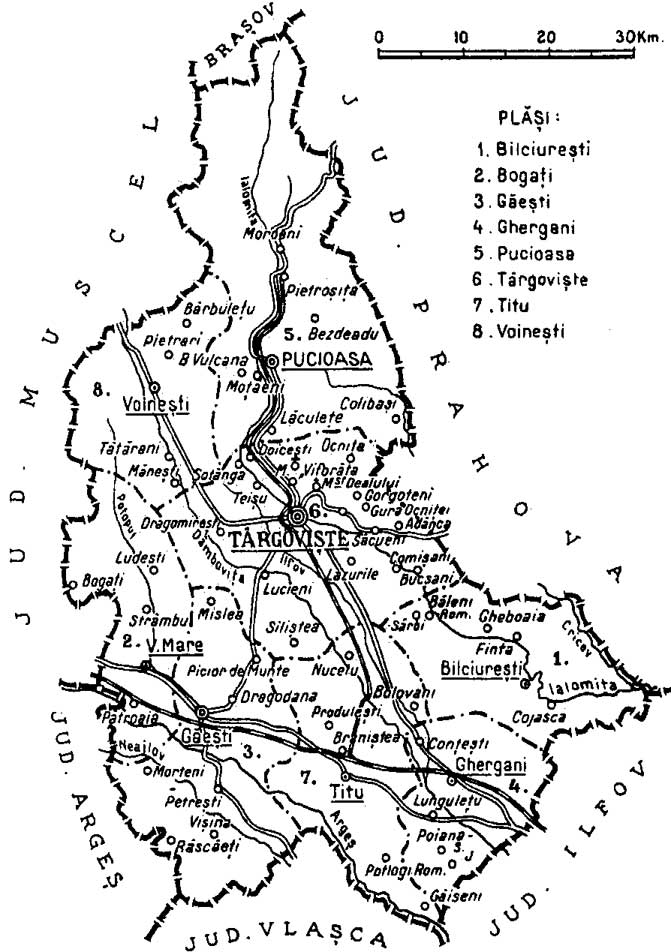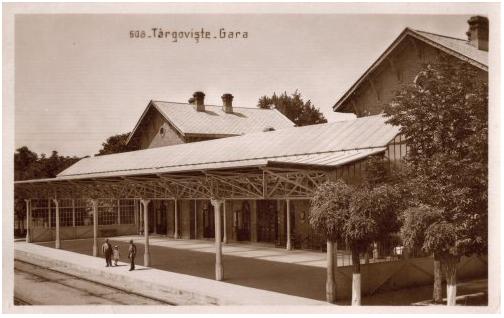|
Vulcana-Băi
Vulcana-Băi is a commune in Dâmbovița County, Muntenia, Romania with a population of 2,934 people as of 2021. It is composed of three villages: Nicolaești, Vulcana-Băi, and Vulcana de Sus. The commune is located in the northern part of the county, away from the county seat, Târgoviște. The Orthodox Orthodox, Orthodoxy, or Orthodoxism may refer to: Religion * Orthodoxy, adherence to accepted norms, more specifically adherence to creeds, especially within Christianity and Judaism, but also less commonly in non-Abrahamic religions like Neo-pag ... , founded in 1654, is situated on the territory of the commune. References Communes in Dâmbovița County Localities in Muntenia {{Dâmboviţa-geo-stub ... [...More Info...] [...Related Items...] OR: [Wikipedia] [Google] [Baidu] |
Dâmbovița County
Dâmbovița County (; also spelt Dîmbovița) is a county () of Romania, in Muntenia, with the capital city at Târgoviște, the most important economic, political, administrative and cultural center of the county. It is a traditional administrative unit, first attested in 1512. Demographics In 2021, it had a population of 479,404 and the population density was 120/km2. It is one of the most densely populated counties in Romania. * Romanians – 87.09% * Roma - 3.96% * Bulgarians - 0.31% * Serbians 0.1% * Others - 0.13% * Unknown - 8.41% Name The county is named after the Dâmbovița River, which is a name of Slavic origin, derived from ''Дъб, dâmb'', meaning "oak", as it once flowed through the oak forests of the Wallachian Plain. Geography Dâmbovița county has a total area of 4,054 km2 (1.7% of the country's surface). It is situated in the south-central part of the country, on the Ialomița and Dâmbovița river basins. The highest altitude is Omu Pe ... [...More Info...] [...Related Items...] OR: [Wikipedia] [Google] [Baidu] |
Commune In Romania
A commune (''comună'' in Romanian language, Romanian) is the lowest level of administrative subdivision in Romania. There are 2,686 communes in Romania. The commune is the rural subdivision of a Counties of Romania, county. Urban areas, such as towns and cities within a county, are given the status of ''Cities in Romania, city'' or ''Municipality in Romania, municipality''. In principle, a commune can contain any size population, but in practice, when a commune becomes relatively urbanised and exceeds approximately 10,000 residents, it is usually granted city status. Although cities are on the same administrative level as communes, their local governments are structured in a way that gives them more power. Some urban or semi-urban areas of fewer than 10,000 inhabitants have also been given city status. Each commune is administered by a mayor (''primar'' in Romanian). A commune is made up of one or more villages which do not themselves have an administrative function. Communes ... [...More Info...] [...Related Items...] OR: [Wikipedia] [Google] [Baidu] |
Muntenia
Muntenia (, also known in English as Greater Wallachia) is a historical region of Romania, part of Wallachia (also, sometimes considered Wallachia proper, as ''Muntenia'', ''Țara Românească'', and the rarely used ''Valahia'' are synonyms in Romanian). It is situated between the Danube (south and east), the Carpathian Mountains (the Transylvanian Alps branch) and Moldavia (both north), and the Olt River to the west. The latter river is the border between Muntenia and Oltenia (or ''Lesser Wallachia''). Part of the traditional border between Wallachia/Muntenia and Moldavia was formed by the rivers Milcov and Siret. Geography Muntenia includes București - Ilfov, Sud - Muntenia, and part of the Sud-Est development regions. It consists of nine counties entirely: * Brăila * Buzău * Călărași * Argeș * Dâmbovița * Giurgiu * Ialomița * Ilfov * Prahova And parts of four others: * Teleorman (the entire county with the exception of Islaz) * Vrancea (southern p ... [...More Info...] [...Related Items...] OR: [Wikipedia] [Google] [Baidu] |
Romania
Romania is a country located at the crossroads of Central Europe, Central, Eastern Europe, Eastern and Southeast Europe. It borders Ukraine to the north and east, Hungary to the west, Serbia to the southwest, Bulgaria to the south, Moldova to the east, and the Black Sea to the southeast. It has a mainly continental climate, and an area of with a population of 19 million people. Romania is the List of European countries by area, twelfth-largest country in Europe and the List of European Union member states by population, sixth-most populous member state of the European Union. Europe's second-longest river, the Danube, empties into the Danube Delta in the southeast of the country. The Carpathian Mountains cross Romania from the north to the southwest and include Moldoveanu Peak, at an altitude of . Bucharest is the country's Bucharest metropolitan area, largest urban area and Economy of Romania, financial centre. Other major urban centers, urban areas include Cluj-Napoca, Timiș ... [...More Info...] [...Related Items...] OR: [Wikipedia] [Google] [Baidu] |
Târgoviște
Târgoviște (, alternatively spelled ''Tîrgoviște'') is a Municipiu, city and county seat in Dâmbovița County, Romania. It is situated north-west of Bucharest, on the right bank of the Ialomița (river), Ialomița River. Târgoviște was one of the most important cities in the history of Wallachia, as it was its capital from 1418 to 1659. At the 2021 Romanian census, 2021 census, the city had a population of 66,965 people, making it the 27th largest in the country. Etymology The name ''Târgoviște'' is a Slavic name which the city acquired in the Middle Ages. It is derived from the old Slavonic word for "marketplace", referring to the place rather than the market itself. The name is found in placenames not only in South Slavic areas (Bulgarian , Serbian and Croatian '), but also in West Slavic such as Slovak ''Trhovište'', Czech ''Trhoviště'' or Polish ''Targowica, Lower Silesian Voivodeship, Targowica''. Additionally, places with the same name are found in Romania, ... [...More Info...] [...Related Items...] OR: [Wikipedia] [Google] [Baidu] |
Romanian Orthodox Church
The Romanian Orthodox Church (ROC; , ), or Romanian Patriarchate, is an autocephalous Eastern Orthodox church in full communion with other Eastern Orthodox Christian denomination, Christian churches, and one of the nine patriarchates in the Eastern Orthodox Church organization, Eastern Orthodox Church. Since 1925, the church's Primate (bishop), Primate has borne the title of Patriarch. Its jurisdiction covers the territories of Romania and Moldova, with additional dioceses for Romanians living in nearby Ukraine, Serbia and Hungary, as well as for diaspora communities in Central Europe, Central and Western Europe, North America and Oceania. It is the only autocephalous church within Eastern Orthodoxy to have a Romance languages, Romance language for liturgical use. The majority of Romania's population (16,367,267, or 85.9% of those for whom data were available, according to the 2011 census data), as well as some 720,000 Moldovans, belong to the Romanian Orthodox Church. Members o ... [...More Info...] [...Related Items...] OR: [Wikipedia] [Google] [Baidu] |
Communes In Dâmbovița County
A commune is an alternative term for an intentional community. Commune or comună or comune or other derivations may also refer to: Administrative-territorial entities * Commune (administrative division), a municipality or township ** Communes of Algeria ** Communes of Angola ** Communes of Belgium ** Communes of Benin ** Communes of Burundi ** Communes of Chile ** Communes of the Democratic Republic of the Congo ** Communes of France ** Communes of Italy, called ''comune'' ** Communes of Luxembourg ** Communes of Moldova, called ''comună'' ** Communes of Niger ** Communes of Romania, called ''comună'' ** Communes of Switzerland ** Commune-level subdivisions (Vietnam) *** Commune (Vietnam) *** Commune-level town (Vietnam) ** People's commune, highest of three administrative levels in rural China, 1958 to 1983 Government and military/defense * Agricultural commune, intentional community based on agricultural labor * Commune (rebellion), a synonym for uprising or revolutiona ... [...More Info...] [...Related Items...] OR: [Wikipedia] [Google] [Baidu] |


